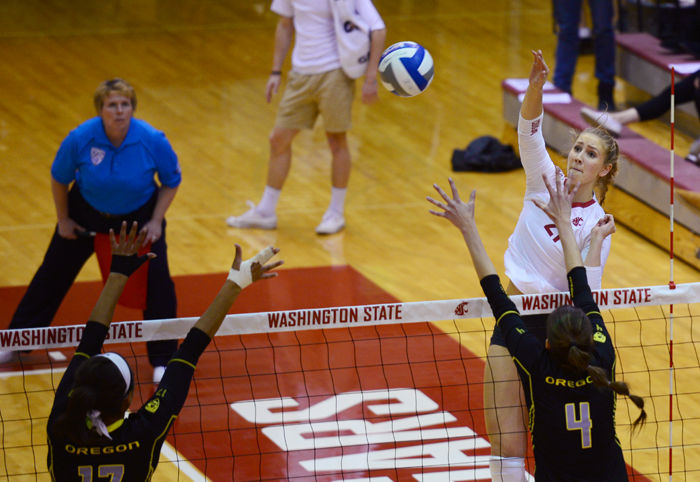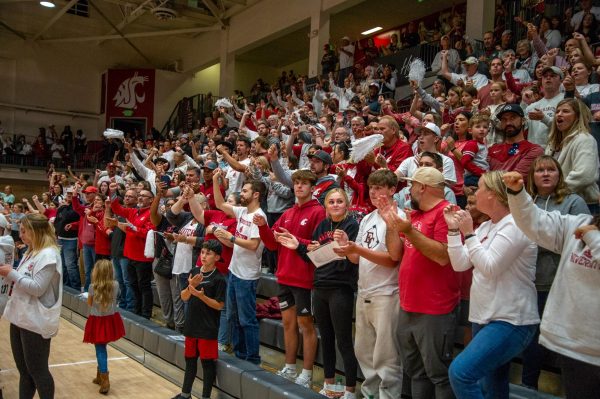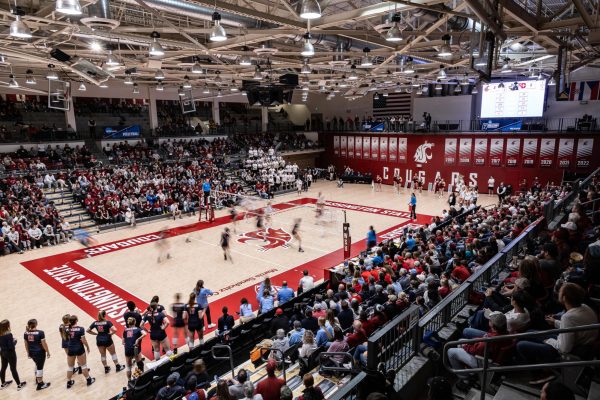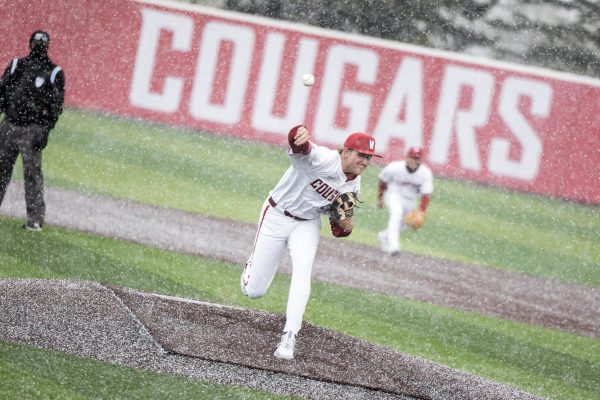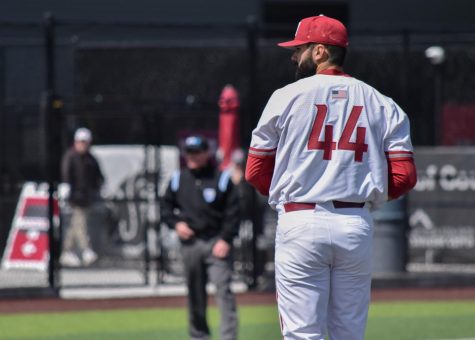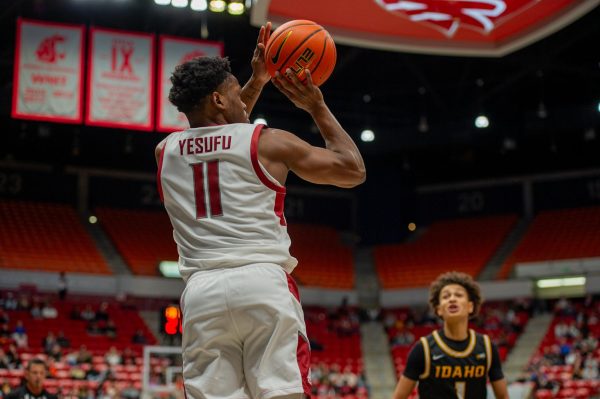A scholar athlete before a volleyball star
November 10, 2016
As the WSU women’s volleyball team prepares to take on Arizona State and Arizona this weekend in Bohler Gym, the waning fall semester reminds fans that the players are student-athletes for a reason.
Juggling education and sports is a long-standing challenge for any college athlete, and junior outside hitter Casey Schoenlein shared her experiences with the juggling act she performs between her studies and the sport she loves.
“I really struggle to find time with my busy schedule,” Schoenlein said, “but at the same time, being an athlete gives me opportunities that I wouldn’t normally have.”
For example, at the WSU and Arizona football game, Schoenlein said she shadowed Cindy Brunson, a WSU alumna and a college football sideline reporter for the Pac-12. Schoenlein said she attributes this opportunity to her being an athlete.
Schoenlein is majoring in journalism and media production through the Edward R. Murrow College of Communication and hopes to be a broadcaster for ESPN or the Pac-12. She said shadowing Brunson was an insight into what her future job could be like.
Schoenlein enjoys a challenge in her coursework. The dubious Communication 300, Writing in Communication, admittedly was frustrating at times, but Schoenlein said that she liked how it pushed her.
Schoenlein said she is a perfectionist when it comes to her academics, but loves her major. Some of her favorite classes include Public Speaking in the Digital Age and Media Law.
“I love public speaking,” Schoenlein said. “I did speech (in high school) and I love doing presentations in class, so I think that’s what drew me to broadcasting side.”
Schoenlein, originally from Bellevue, Washington, said she chose WSU primarily for its volleyball program and impressive coaching staff.
“I knew I was going to go to college for volleyball, so that was my first concern,” Schoenlein said. “That is what drew me to WSU and the fact that we have a great communication program is just the cherry on top.”
The Murrow College is consistently ranked among the best in the nation for communication programs by various publications and media outlets.
Schoenlein said that the reciprocal engagement from students and faculty is what distinguishes the college from other majors offered at WSU.
“What I like about Murrow College is that the students all want to be learning about communication,” Schoenlein said. “There’s a respect from the students that makes them want to work harder because of the reputation and the success that could come from graduating with a Murrow College degree.”
Maintaining a 3.93 grade point average is impressive for any college student, let alone a student that doubles as a Division I athlete. Schoenlein works to maintain the same perseverance in the classroom that she has on the court.
Likening a self-motivation derived from individuals she looked up to in her childhood faring well in the classroom, namely her older sister, Schoenlein remains determined to do her best academically.
“This may sound cliché, but my biggest inspiration is my parents,” Schoenlein said. “They come to all the games, and they are proud of my work in the academic side. So on the academic side of things, I think part of me wants to succeed so they can be proud of me.”
Being on the road most weekends limits the time Schoenlein and her teammates have to study and complete homework, but a mutual support system and work ethic helps offset a hectic schedule and missed classes.
Schoenlein said the coaching staff is flexible with each player’s coursework and sets aside time for study tables while away from Pullman.
“On the road studying is up to us, so we have to manage our time,” Schoenlein said. “We don’t get any extra support (with tutoring on the road).”
With six games remaining in the regular season, it serves as a reminder for Schoenlein and other players that there truly is no offseason. Division I volleyball is a 365-day commitment, as are studies, she said.
Schoenlein said that players usually take 12 credits in the fall semester and try to make them lighter classes in workload with more flexibility, but then use the spring term to hit school harder alongside spring volleyball.
“Then in the spring is when we fit in our labs, our tougher courses that are going to require more time studying,” Schoenlein said. “Then we have the weekends to actually spend studying rather than playing volleyball.”
As the team currently rides a four-game losing streak and has fallen out of the national rankings after dropping seven of its last nine matches, Schoenlein said the rough patch serves as a reminder to keep everything in perspective.
The student comes before the athlete, and at the end of the day, volleyball doesn’t last forever, she said. A college degree, however, does.
“I just hope we remember that it’s a game we love and have a passion for,” Schoenlein said. “Yes, sometimes it can be incredibly frustrating … but in the end, it’s just a game that we love to play and I hope that we (always) have fun playing.”

